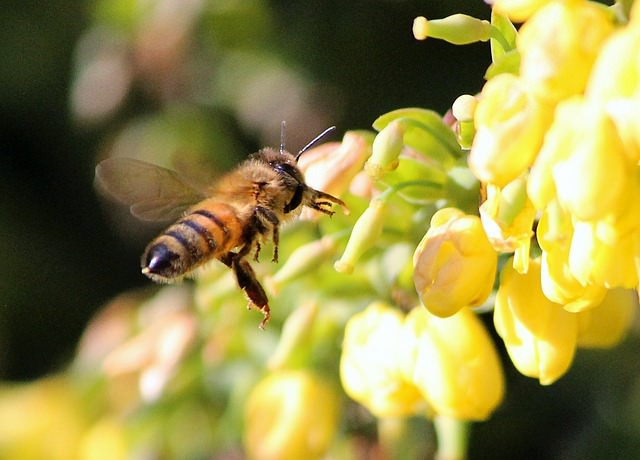As Wisconsin warms up, people are more active outdoors, but so are stinging insects. Every year in the U.S., 40 people die from being stung by insects. Learn what insects to watch out for, how to avoid being stung, and what to do if you are stung.
What stinging insects do I have to worry about in WI?
Several, unfortunately. But before we list them, it’s important to note the difference between a bite and a sting. Some insects like ticks and ants don’t have stingers, but they can still hurt you with their jaws. If they bite you, don’t worry about having to pull out a stinger. Just put ice on the bite until it stops swelling.
1. Honey Bees
Honey bees are efficient at making that delicious honey we put on our bread and in recipes. They can also sting you if they feel threatened. Their stinger is barbed so it stays in your skin, poison sac included, even though they fly away to die later.
Remove the stinger promptly by scraping it with your fingernail, knife or plastic card. Do not try to pick the stinger off with your fingers because this squeezes the poison sac, injecting more poison into your skin.
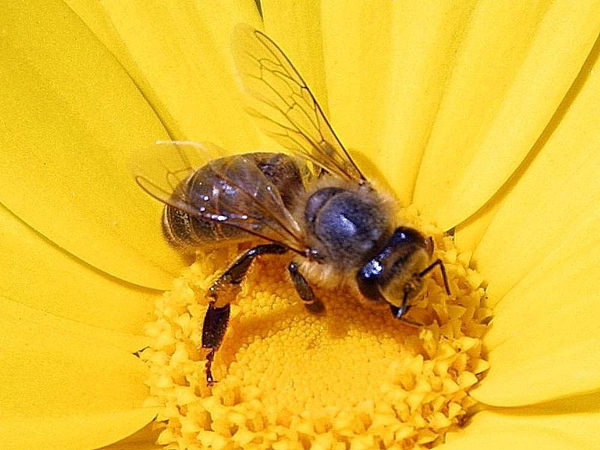
By Jon Sullivan [Public domain], via Wikimedia Commons
2. Bumble Bees
These fuzzy giants buzz from plant to plant, gathering pollen to make honey and pollinating crops along the way. They also have barbed stingers. But, unlike honey bees, they keep their stinger intact even after stinging you with it. Don’t bother them, and they will rarely bother you.

By Niek Sprakel
3. Wasps
Wasps are flying villains. They’re very aggressive and sting repeatedly with their unbarbed stingers. They build their paper-looking nests on homes, barns, sheds and on wood piles.
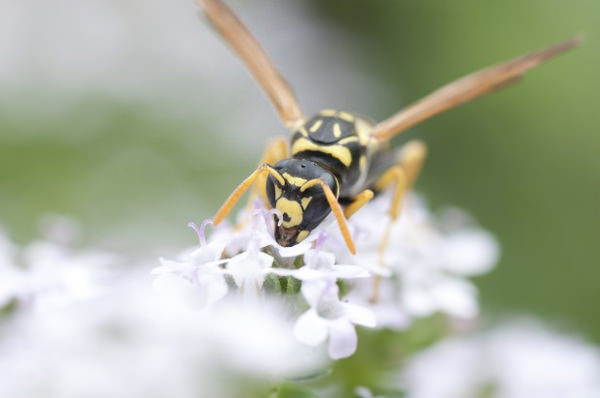
By Elbambolo Bambolina
4. Hornets
Hornets can deliver a painful sting, so it’s best to avoid their gray-colored, teardrop-shaped nests often found in hollow trees, attics, and porches. Though not as aggressive as yellow jackets, they can be very aggressive if their nest is threatened.
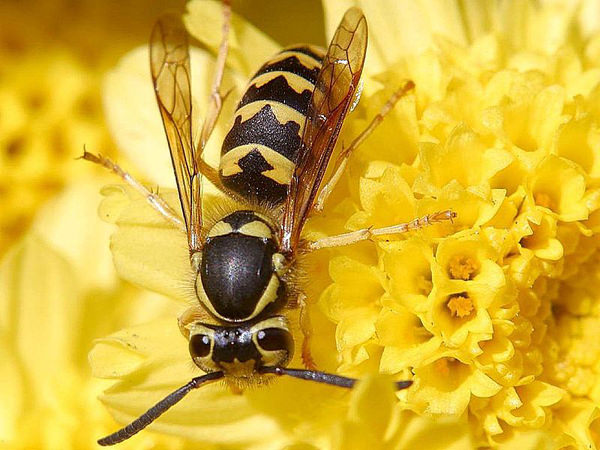
By Jon Sullivan [Public domain], via Wikimedia Commons
5. Yellow Jackets
Unlike all the stinging insects we just covered, yellow jackets nest in the ground. That makes it all too easy to accidentally step on one or stumble onto a nest, which will provoke an aggressive defense.
They often sting from August through September because that’s when they have grown large enough to need large doses of protein and sugar, often in the form of your sandwich and soda.
Prevent yellow jackets from invading your home by putting tight-fitting lids on your outside garbage bins or sealing trash in airtight bags.
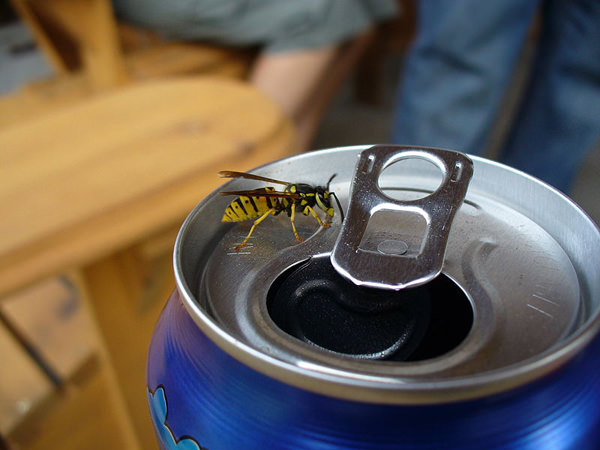
By Neelix at en.wikipedia [Public domain], from Wikimedia Commons
How do I avoid being stung?
Avoid their nests and don’t walk barefoot outside. If a stinging insect lands on you, stay calm and gently brush them away. Don’t panic and quickly shake your arm or swat at them because they will consider that aggression and sting you in self defense.
Don’t wear sweet-smelling perfume, hair spray, suntan lotion or cosmetics. And void cooking or eating outdoors during August to September to minimize attracting yellow jackets.
What happens if I am stung?
 At first you will feel an intense burning, followed by swelling and severe itching. If you have anaphylaxis to stings, in the first hour you could experience the following severe allergic reactions:
At first you will feel an intense burning, followed by swelling and severe itching. If you have anaphylaxis to stings, in the first hour you could experience the following severe allergic reactions:
- Shock
- Throat or chest constriction
- Impending sense of doom
- Difficulty breathing and wheezing
- Dizziness and confusion
- Swelling of the lips, tongue, ears, etc.
- Fever
- Nausea, diarrhea, stomach cramps
- Unconsciousness
- Hives and reddening of the skin
Learn more about anaphylaxis here.
What do I do if I get stung?
First, apply ice to the bite / sting. If you’re allergic to stings, make sure you always carry an emergency medical kit during spring and summer. Always contact your doctor regarding the stings to discuss if further treatment is necessary.
What should I do now?
If you’ve never been stung, and you’re worried if you might have anaphylaxis, contact our office today to get tested. It’s better to be safe than sorry. Summer is short up north; enjoy it confidently.
Click here to learn What to Do after an Allergic Reaction to a Bee Sting.
Sources:
http://learningstore.uwex.edu/assets/pdfs/G3564.pdf
http://www.wil-kil.com/pest-library/profile/stinging-insects
http://www.insectidentification.org/insects-by-state.asp?thisState=Wisconsin
http://www.uwhealth.org/health/topic/symptom/insect-bites-and-stings-and-spider-bites/insbt.html


